BestReviews is reader-supported and may earn an affiliate commission. Details
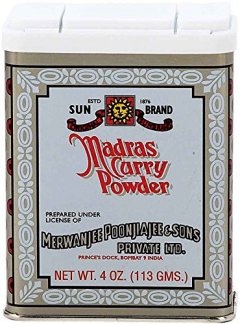
A popular curry powder that tops competitors for its delicious herbs and spices that result in scrumptious dishes.
A popular curry powder that tops competitors for its delicious herbs and spices that result in scrumptious dishes.
Earns praise from home chefs who love to cook with curry powder for its rich, balanced flavor. Great for numerous recipes, including authentic Indian dishes. A blend of 14 herbs and spices by a popular brand.
Plastic lid is flimsy and prone to breaking. A few users found it salty.
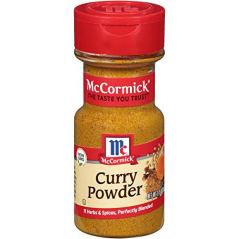
Classic curry powder by a popular spice brand that will enhance the flavor of sauces, soups, meats, and more.
Classic curry powder by a popular spice brand that will enhance the flavor of sauces, soups, meats, and more.
Crafted with 11 herbs and spices that are savory but not overpowering. Very fresh with nice yellow color. Made by one of the most recognizable brands on the market.
May not suit those who prefer curry that has a little heat. It's also somewhat salty.
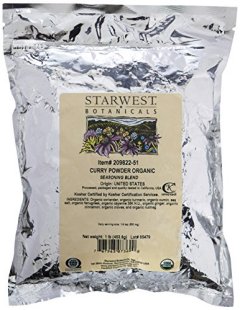
This bulk bag of curry powder is the best pick for any cook that uses a lot of this flavorful seasoning.
This bulk bag of curry powder is the best pick for any cook that uses a lot of this flavorful seasoning.
We love that this curry powder is made from 10 tasty spices that are certified organic. Flavor has a kick that many find pleasing. Comes in a 1-pound bulk bag that avid cooks will appreciate.
Some customers found this curry powder a bit too salty and spicy.
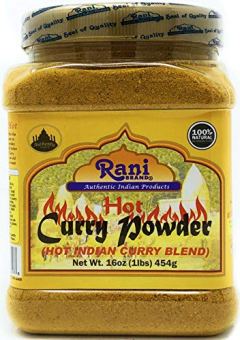
Quality curry powder that doesn't contain salt and provides just enough warmth to spice up your favorite recipes.
Quality curry powder that doesn't contain salt and provides just enough warmth to spice up your favorite recipes.
Offers a South Indian blend of 11 herbs and spices that deliver a touch of natural heat. Doesn't contain salt. Has a delicious flavor that pairs nicely with numerous types of food.
Some may wish this spice blend were even hotter. Some noted damaged containers.
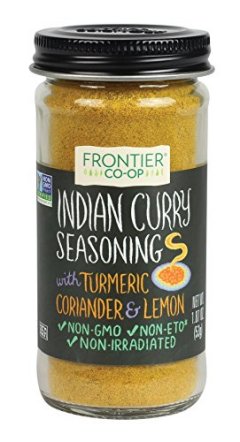
If you are looking for curry powder with a zesty twist, this is the one to choose. It's made with lemon peel and powder that give it a distinctive flavor.
If you are looking for curry powder with a zesty twist, this is the one to choose. It's made with lemon peel and powder that give it a distinctive flavor.
In addition to eight herbs and spices, this curry powder includes lemon that goes well with soups, fish, rice, and more. Emits a tempting aroma when cooking. No salt.
Those that like bold, spicy curry may be disappointed with this blend's mild flavor.

We recommend these products based on an intensive research process that's designed to cut through the noise and find the top products in this space. Guided by experts, we spend hours looking into the factors that matter, to bring you these selections.

The term “curry”may stir happy memories of sitting with family and friends in a good restaurant, eating delicious food. That’s what we think about when we buy a container of curry powder, and that’s why it’s so easy to just grab any old brand off the store shelf … only to be disappointed.
Time to let go of that disappointment. It’s still possible to awaken your taste buds and experience those great dishes at home—with the right curry powder.
Curry powder is not a single spice or a standard spice blend. It is a mixture of spices that varies depending on the country and the cuisine. At its core, however, is that warm, aromatic blend of turmeric, coriander and pepper that millions—no, billions of people love.

The word “curry” has a complicated history. It’s thought that the English adapted the Tamil word “kari,” which means “sauce,” and anglicized it into “curry,” using it to describe the spiced dishes they were introduced to in India. It was not too long before enterprising merchants began to sell bottles of curry powder to English returning home. This powder was a variation on garam masala, a mixture of spices that is a staple in Indian homes.
However, curry powder wasn’t exported just to England. Indians traveled to many countries, and the spice blends they brought with them were incorporated into local cuisines. Curry dishes can be found in Thai, Japanese, and Jamaican cuisine, among others. These dishes can be quite different from the curry dishes developed for English palates. One thing that ties them together, however, is the rich flavor and warmth that curry spices imbue throughout a dish.
Today, you can find variations of curry powder in every part of the globe. Many of these blends can be found on store shelves or ordered online.

Turmeric, pepper, cumin, mustard, and other spices feature prominently in curry powder. They’re not only flavorful; they can aid in digestion and reportedly are beneficial for circulation and overall health.
There is more than one kind of curry powder. In India, curry powder has four major varieties alone. You can also find unique curry powders in dishes from Thailand, Japan, North Africa, Indonesia, Trinidad, and Jamaica.
What’s the best approach to take, then, when choosing a curry powder?
Spice powders lose their punch over time, so check the sell-by dates on the packaging, and avoid the product if it’s within a couple of months.
Selection, processing and storage of the spices used in curry powder really does matter. Look for brands that have a reputation for good-quality spices in general, and try their curry powder first.
“Raw” curry powder doesn’t taste very good; it takes heat to bring out the deeper flavors of the spices. Add it to a dish while there’s still plenty of cooking time left.
Not all curry powders are the same. Even when you’re looking for a generic Indian-style curry powder, the flavor profile is different from brand to brand. Curries can also differ from country to country.
Madras curry powder is the closest to what we see on store shelves in the U.S. It’s a bright-yellow to orange mixture of earthy, warm spices including turmeric, red pepper, ginger, cumin, and fenugreek.
Garam masala is the grand dame of spice mixes in India and the direct source of the Madras-style curry powder found in stores. Cardamom, coriander, bay leaves, and black pepper figure prominently, among other spices.
Tandoori masala is a spice mix for marinating meats and vegetables that will be grilled over an open fire.
Chaat masala is a tangy, flavorful spice mix that features dried mango and is sprinkled on finished dishes to add a bright note.
Jamaican curry powder blends turmeric-rich Madras curry powder with the aromatic flavors of the island like allspice (known as pimento), scotch bonnet chilies and nutmeg.
Curry powder from Thailand often blends classic spices of masala—turmeric, cardamom, fenugreek and coriander—with regional ingredients like lemongrass, galangal, lime, and chili peppers to create a range of eye-opening flavors. Spices are adjusted according to the dish.
Japanese curry powder (kare-ko) is the core ingredient in one of the country’s most popular comfort foods, a thick stew called kare that’s served on top of rice. It’s also used in soups and other dishes.
As you can tell from the many curry spice mixes we've listed, the way curry powder is used depends on the dish you’re making. Singapore rice noodles, for example, are sprinkled with a Madras-style curry powder. Thai curries incorporate as many fresh ingredients as powdered seasonings. Indian dishes like saag paneer rely on a masala blend to bring a complex, warm note to simple ingredients.

For just $2 to $5, some nice basic curry powder blends are available with a similar ratio of spices. For a first-time buyer, this could be a perfect starting point.
You can find more specialized blends, including Jamaican curry powder and Madras curry powder, in the $6 to $9 range.
Organic curry powder blends abound in the $10 to $19 range, as do bulk-size containers of curry powders from India, the Caribbean, and Thailand.

A. The most noticeable difference between garam masala and curry powder is the amount of turmeric used. It’s easy to see that curry powder has a lot of turmeric in it compared to its other spices. Garam masala has much less turmeric, and some formulations don’t use turmeric at all.
A. The ingredients in curry powder are known to have tremendous health benefits. Turmeric in particular is a powerhouse spice. Turmeric’s active ingredient, curcumin, helps reduce inflammation and improve blood circulation. Other curry powder ingredients like coriander, bay leaves, and cinnamon can help improve digestion and the absorption of nutrients.
A. Curry powder is highly versatile and used in many foods. It can add a flavorful kick to veggie burgers or turn a humdrum side dish of rice into a star attraction. Sprinkling a little curry into spaghetti sauce will amp up the savoriness. Use curry powder when canning and make some fantastic recipes like chutney or a kickin’ curried apple jam.
A. Curry powder’s flavor comes through at its best when added in the middle of cooking a dish. If it’s added right at the end of cooking, the spices may not have time to bloom, and the dish will have an off taste. If a recipe calls for adding curry powder at the beginning of cooking, usually when you’re sautéing the onions in oil, add it carefully, and keep stirring so the spices don’t burn.
A. There’s a neat trick to adding curry powder just before a dish is finished cooking. Heat a little oil in a small pan and stir in the curry. Let it cook for about 30 seconds, taking care not to burn it. Then, stir into the dish and complete the cooking.
While this isn’t always ideal, it’s much better than sprinkling raw curry powder into a nearly-finished dish. Doing this will result in a gritty texture to the sauce with a weird taste.
A. Curry powder can stay fresh up to three years, depending on how and where it’s stored. If it sits on a spice rack over the stove or in direct sunlight, that time may be much shorter. If you’re not sure that a curry powder is still good, test it by pouring a dime-sized amount into the palm of your hand. Rub or crush it, then smell it and taste a little of it. If the aroma and flavor aren’t very strong, it’s time to replace it.
Get emails you’ll love.
Learn about the products you’re wondering if you should buy and get advice on using your latest purchases.
